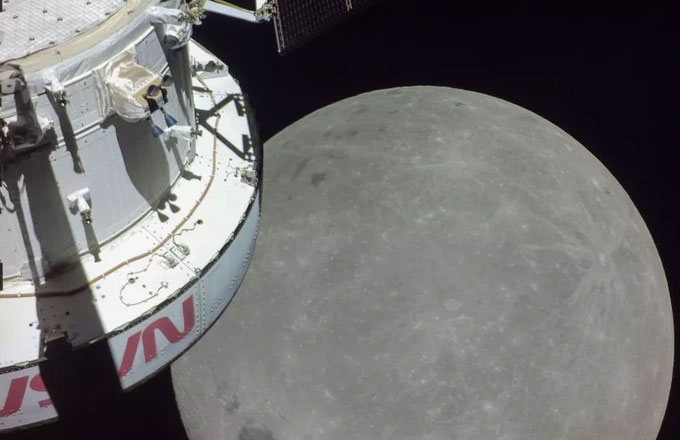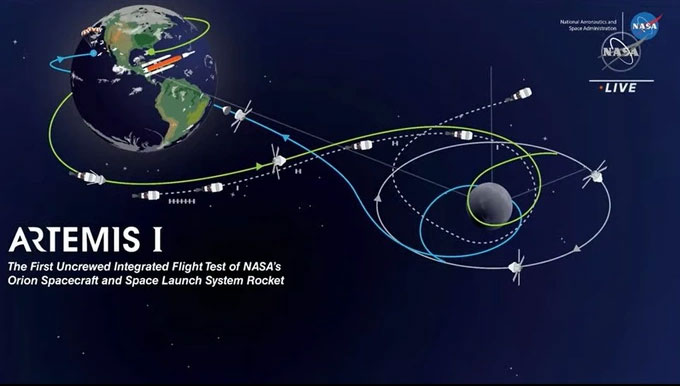NASA’s Orion spacecraft has successfully passed the dark side of the Moon early this morning, maintaining a distance within 130 km from the surface.
On the night of November 21 and the early morning of November 22, NASA’s Orion spacecraft approached the Moon as part of the Artemis-1 mission. In the coming days, the spacecraft will ignite its main engine to maneuver around the Moon’s orbit.
Mr. Howard Hu, the Orion program director at NASA, stated that this approach holds special significance. One of its primary objectives is to test the effectiveness of the Orion spacecraft in a microgravity environment.
From the experiences gained, NASA will be able to make timely adjustments and necessary repairs before proceeding with the crewed mission, named Artemis-2, scheduled for 2024.

The Moon from Orion’s perspective at very close range. (Photo: NASA).
“If all goes well, we will witness the vehicle and astronauts landing on the Moon in the near future,” Mr. Hu mentioned in a statement on November 22.
A NASA representative also announced that Orion will officially be the first crewed spacecraft designed to reach the farthest distance from Earth, as it will enter a retrograde orbit around the Moon, rather than just touching its surface. The previous record was held by NASA’s Apollo 13.
Scheduled for November 25, Orion will fire an engine designed to place the spacecraft into a retrograde orbit, approximately 64,000 km from the Moon’s surface. Subsequently, another engine will be activated to safely return the spacecraft to Earth.
Earlier, on the afternoon of November 18 (Vietnam time), NASA successfully launched the Orion spacecraft as part of the Artemis-1 mission from the Kennedy Space Center in Florida, USA.
According to Mike Sarafin, the mission manager for Artemis-1, aside from some minor, non-concerning issues, the flight of Orion and the first half of the Artemis-1 mission have been assessed as proceeding smoothly.

Projected flight path of the Orion spacecraft. The green indicates Phase 1 – the spacecraft’s approach to the Moon; while the blue describes the return journey to Earth (Photo: NASA).
As the mission is set to last a total of 26 days, NASA will continue to closely monitor the activities of the Orion spacecraft, as well as prepare for the spacecraft’s return to Earth, which is also very important.
According to the schedule, Orion is set to return “home” on December 11, by plunging into Earth’s atmosphere at a staggering speed. The spacecraft’s emergency landing system will be activated to slow its descent before landing in the waters off the coast of California, USA.


















































